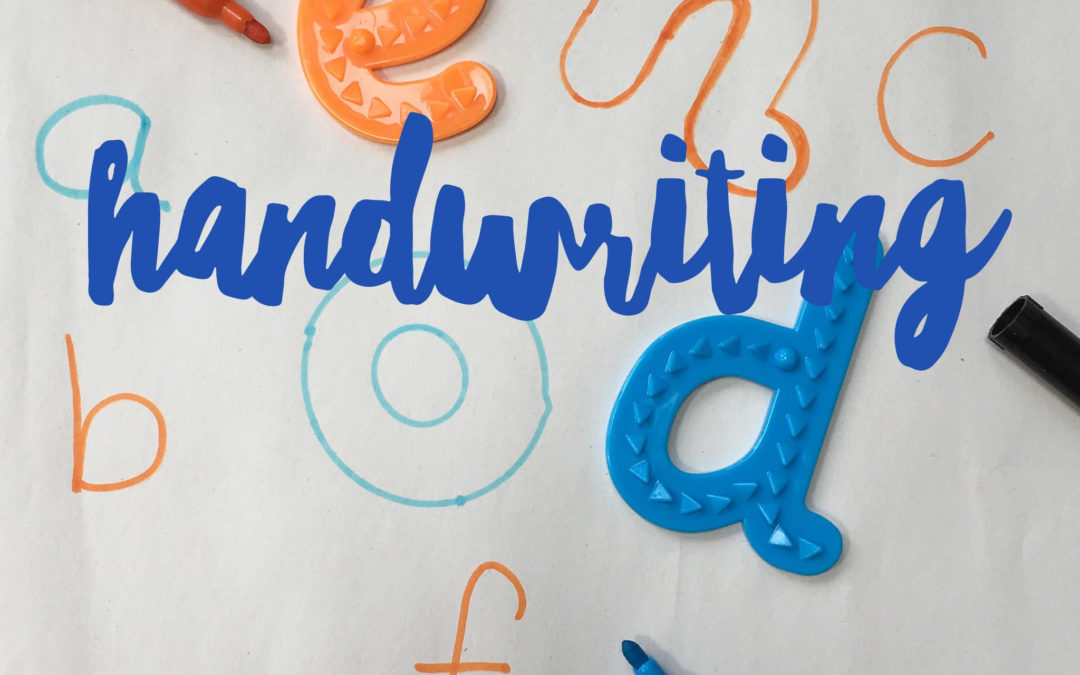Handwriting takes a very long time to develop and as with lots of other learning how quickly children pick it up and how ‘easy’ they find it to learn is dependent on their strengths and interests. Children aren’t expected to develop their own style of handwriting until they are in year 5 of Primary school, so no need to panic, but the sooner they feel confident to write neatly and at a reasonable speed then the more time they will have to be able to focus on what it is they are writing. It is a very personal thing, I’m sure you know lots of adults who have beautifully neat writing or those whose writing you can hardly read! Handwriting is a process and it’s learning begins from the baby years. Before even thinking about forming letters or numbers for writing, it’s about developing strength and co-ordination in their hands.
Strength and co-ordination –
All of the activities that babies do to develop grip strength and co-ordination will help them with their handwriting as they grow up. Practising big movements such as grabbing, throwing, catching, arm movements are called ‘gross motor’ skills. ‘Fine motor’ skills are things like pinching sequins and pom poms, using pegs, posting and lacing activities which focus more on the smaller and more detailed movements. Lots of pre-schools and schools especially in Foundation/ Reception class will have daily sessions or activities out all the time for this practise. The learning comes into the ‘Physical development’ part of the curriculum. You might hear the phrases ‘finger gym,’ or ‘funky fingers’which will be fun and playful activities set up to help your child develop strength in their hands and what we call ‘pencil grip’ – where they are able to hold a pencil, pen or painbrush effectively.
Pencil grip –
Pencil grip will develop at different times for children. Some will have mastered a ‘tripod grip or grasp’ where they use three fingers when they are around 3-4 years old and for some children this takes much longer. All of the above strength and co-rdination learning will help to get ready for developing pencil grip.
Below is an idea of the stages which your child may go through when developing their pencil grip. As you can see a good tripod grasp can take until they are 7 years old. Schools may offer extra help for your child to develop this, they might call it an ‘intervention’ and should talk to you so you know how you can help at home.
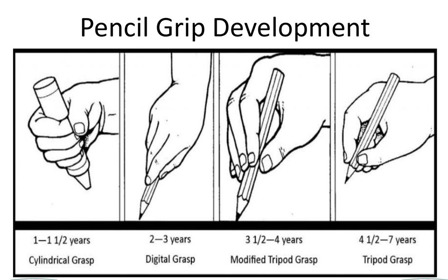
Here’s a little video idea to help develop the tripod grasp. Lots more ideas on our instagram, facebook and pinterest pages.
Writing Letters or ‘Letter formation’
Children will learn to write lower case letters first. Often this happens alongside phonics teaching so they might not learn the order a,b,c,d they might start with s,a,t,p,i and n.
Schools and pre-schools will have different methods for teaching letter formation. I will go into cursive and pre-cursive a little bit but I don’t want to bore you to tears! Many children will learn letter formation in the same way you and I probably did. Some letters start from the middle and some at the top. You might have learnt ‘one armed robot letters’ and ‘caterpillar letters’ or something totally different. I would advise asking your school or pre-school which method or ‘scheme’ they use so you can copy this if you want to help your child at home.
What is pre-cursive/ cursive writing?
Below are two ways to form letters. The top row is probably how you learnt to write them and it is still how lots of schools and pre-schools teach. Children writing in this way won’t join their letters until they can form them all, usually in year 2 or later. The letters start in different places, some at the top and some in the middle. In the picture the coloured dots show the starting position for forming the letter.
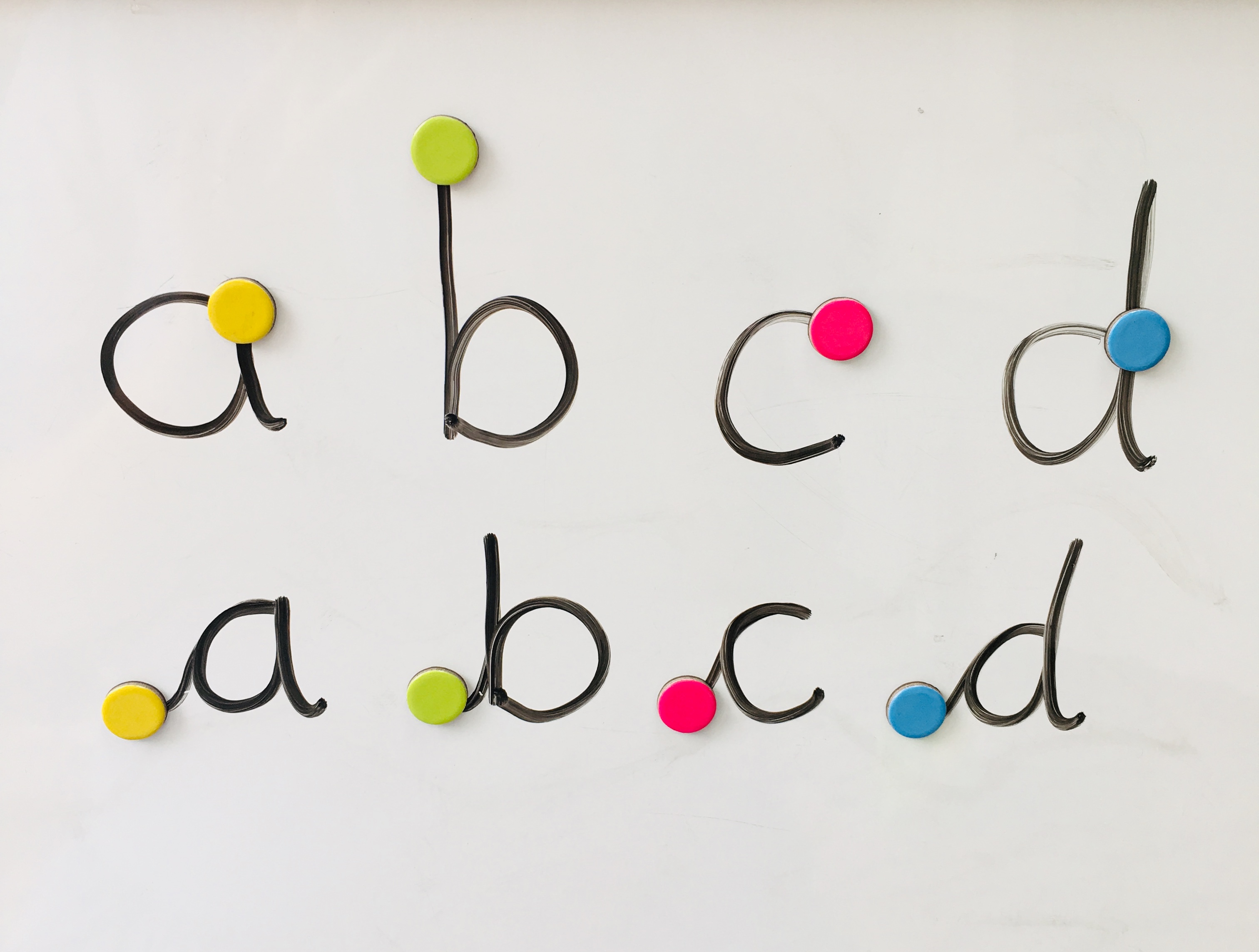
The second row of letters shows ‘pre-cursive’ formation. This is where all of the letters start in the same place (see the dots again.) Some schools will use this way of writing and it can seem really alien if you haven’t used it before. There is lots of research to say this way of writing is helpful. It means children don’t have to learn another way of forming letters when you start to join letters together because when you join you have to start all letters from the end of the last letter which is mostly on the line. It also means all letters start from the same place and this can be helpful for children who get letters the wrong way around. To counteract this, there is lots of research to say this way of writing isn’t helpful for very young children. I know that’s a bit of a pain and we’re not advising either way is better. Teachers will do what they believe to be best in each setting so really it depends on what your school has chosen but hopefully it’s useful to know the different ways.
The video below shows a being written in pre-cursive first and then in print.
Want to practise at home?
Some children will love mark making, drawing, writing, developing find motor skills and all of the activities involved. But as with everything some might hate it or find it really challenging and need some help. Our advice for practising at home is to keep it fun and low pressure. Children are always likely to do more and learn if they don’t realise it’s learning, if it’s packaged as play! Practise those gross and fine motor skills with everyday items:
- string penne pasta or beads onto spagetti (dried!) or onto laces
- pegging activities – helping to put the washing out gets two jobs done at once!
- using squeezy bottles with water, make shapes and letters on a patio if it’s sunny
- playdoh – great for developing strength
- Anything arty with sequins, stickers pom poms etc helps the fine motor development
- Mark make or write with loads of different objects – this can really help children who don’t want to write. Try feathers dipped in paint, chalks, novelty pens, sticks, anthing you can think of that isn’t a pencil or pen but that can be held like one!
Here are a few resources and apps that you could use to help at home too if you fancy it!
Apps:
Singalong Cursive Handwriting
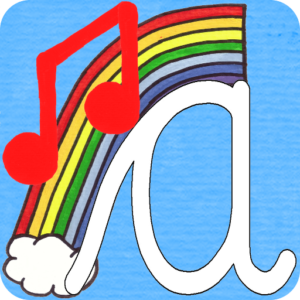 A fun little tracing app with catchy songs and different levels – this is for teaching pre-cursive letter formation.
A fun little tracing app with catchy songs and different levels – this is for teaching pre-cursive letter formation.
Writing Wizard
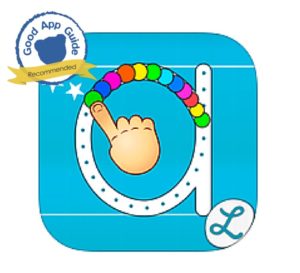 This is a really funky app with very engaging visuals. Lots of settings to practise letters and words. They do a cursive version too.
This is a really funky app with very engaging visuals. Lots of settings to practise letters and words. They do a cursive version too.
Alphablocks
 No letter formation practise but great for recognition and hearing sounds. There are loads of other paid for alphablocks apps and the TV programmes are fab if you want some help with phonics.
No letter formation practise but great for recognition and hearing sounds. There are loads of other paid for alphablocks apps and the TV programmes are fab if you want some help with phonics.
Resources:
If you do want to buy some letters and numbers to use at home here are some we like. Lots of shops sell letter and number formation wipe clean books which can be great if your child likes these. Remember to check which sort of letter formation the school teaches so you can match this.
Tactile letters
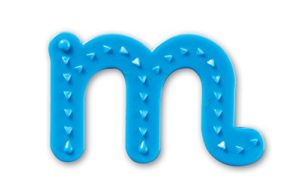 A great little set to use in everyday play. Check our our instagram videos for some ideas!
A great little set to use in everyday play. Check our our instagram videos for some ideas!
Lowecase Sand Moulds
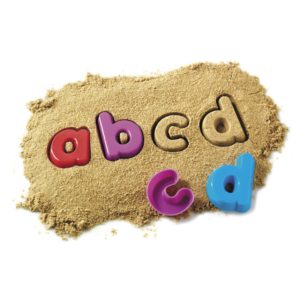 A lovely little set to use in sand, soil, playdough etc. Trace the shapes, fill the moulds, great for indoors and out!
A lovely little set to use in sand, soil, playdough etc. Trace the shapes, fill the moulds, great for indoors and out!
Playfoam numbers set
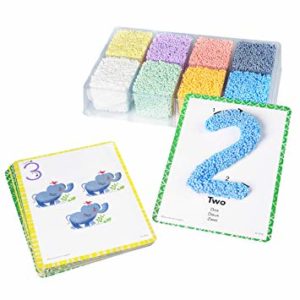 I love playfoam, heres a little set to form numbers which is really practical. They do a letters set too which is capitals.
I love playfoam, heres a little set to form numbers which is really practical. They do a letters set too which is capitals.
Hopefully this has helped out with some knowledge about handwriting development and ideas to help at home. Check us out on instagram, facebook and pinterest for more!

